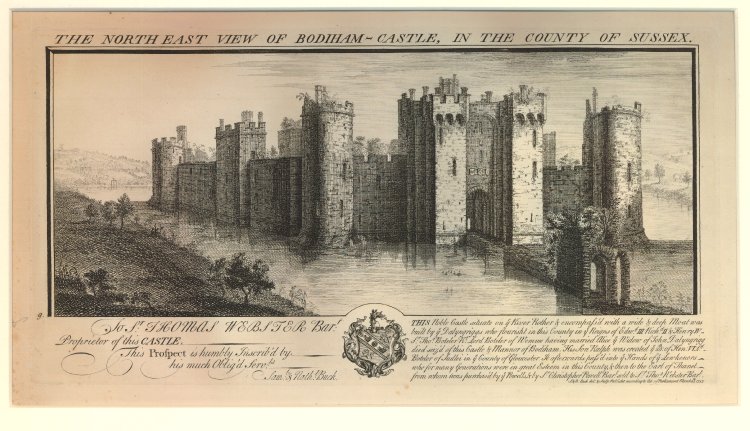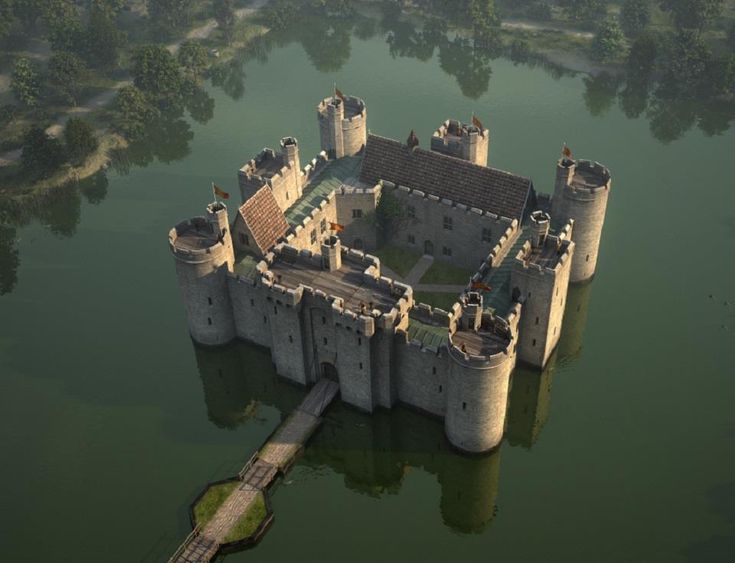
Nestled in East Sussex, England near Robertsbridge, the 14th century Bodiam Castle was built by a former knight of Edward III. Moated, the castle was dismantled by the mid 1600s and stood as a scenic ruin until John Fuller purchased it in 1829 and partially restored it. It would then be sold to 1st Baron Ashcombe, then Lord Curzon who would also undertake restoration work.
In the Regency era, it would have appeared a delightful ruin, like so many follies springing up on country estates, an idyllic repast for visitors and locals.

Abbeys, Castles and Ancient Halls of England and Wales: South, 1872









